At Butler Technologies we live wearable technology every day. We partner with companies to develop e-textiles that incorporate printed heaters, printed biosensors, force sensing resistors, etc. And because we are so passionate about wearable smart garments, e-textiles (Electronic Textiles), and flexible circuits, we are always watching the market for cool and innovative ideas.
We’ve found that wearable e-textiles can fall into various categories. Medical/Healthcare, Fitness/Performance Sportswear, and Military/Personal Protection Equipment. For this article, we’re going to focus on wearables that fall under the medical category.
Here are some companies that are also embracing the medical wearable future. Not all solutions currently use printed flexible circuits in their products although it’s the innovation that we love to see.
Medical Wearable Innovation
1. ActionSense
The ActionSense team has developed a technology-infused glove, which analyses hand movements, wrist and finger movements, and examines the flexibility and limitation in a patient’s hand joints through measurement of angular and velocity data.
Key features of the ActionSense glove include:
- Sensors placed on the fingers measuring linear movement;
- Sensor data is collected and returned to a control panel located on the wrist.
- Data is sent wirelessly to a remote application for analysis by the clinician.
This process allows the clinician to accurately diagnose the severity of the patient’s condition, prescribe treatments more efficiently and recommend rehabilitation plans, where appropriate.
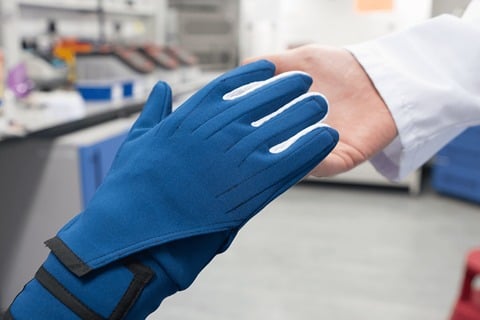
2. greenTEG
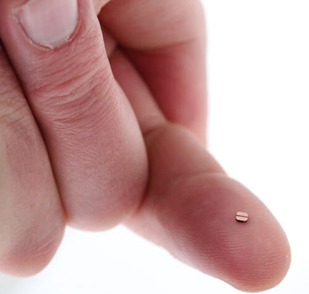
Core body temperature is an important vital parameter to determine a person’s health. greenTEG offers the world’s first core body temperature sensor for continuous and non-invasive measurements. The miniaturized sensor is ideal for the integration into wearable and med-tech devices with skin contact.

Core body temperature is one of the four primary vital signs of our body. greenTEG offers the first solution to monitor core body temperature continuously and non-invasively. This helps to avoid performance breakdown. The sensor can be easily integrated into any wearable device with skin contact. This makes the application ideal for both medical wearables and performance sportswear.
There are scientific findings on the link between core body temperature and sports performance. By monitoring the core body temperature, athletes can perform better and for longer periods of time.
3. Owlet Smart Sock
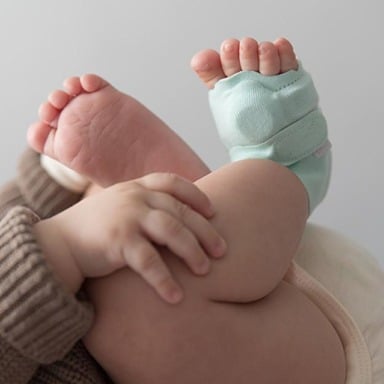
Owlet has developed a Smart Sock that comfortably wraps around a baby’s foot to track heart rate, oxygen levels and sleep using clinically-proven pulse oximetry. The base station glows green to let you know everything is okay but notifies with lights and sounds if heart rate or oxygen levels leave preset zones. A parent can see heart rate & oxygen levels while streaming HD video & sound to their cell phone.
Owlet determined that because sleep is critical to the infant’s overall wellness, mood, and development – tracking baby’s heart rate and movement, can provide insights into totals hours slept, awake times and a breakdown of light vs. deep sleep. This data helps create routines and develop healthy sleep habits for the baby.
Owlet will also be releasing the Owlet Band in late 2019. The Owlet band is a pregnancy monitor that will track the health of an unborn child. It does this by tracking heartbeats and fetal movement and reporting the data to an app. This allows you to see the health of your baby in real-time
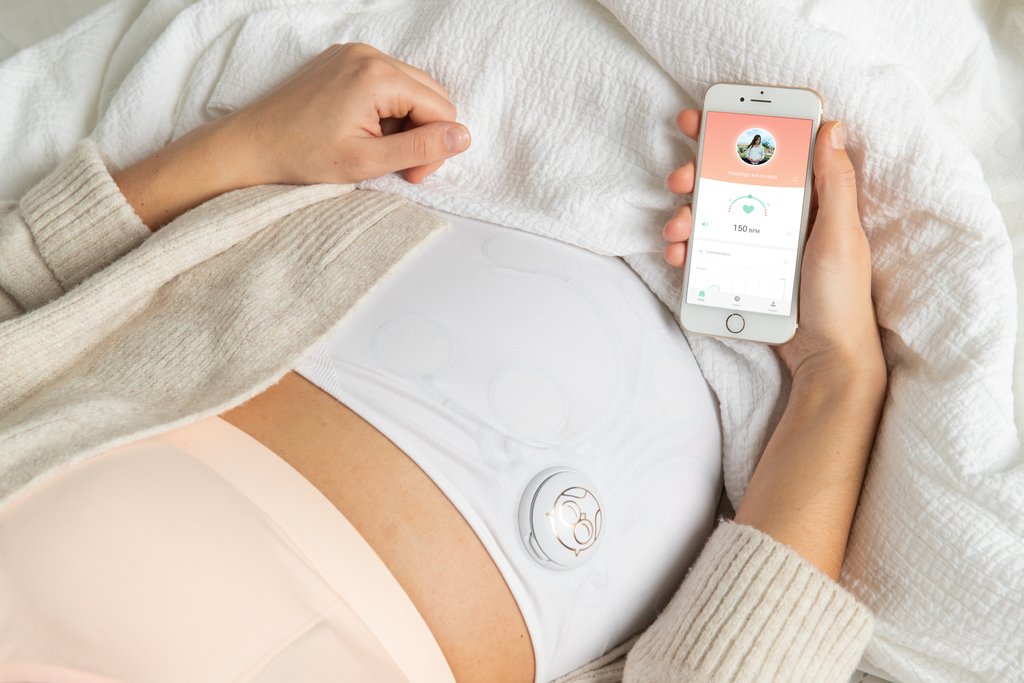
4. Nanit Breathing Wear

Keeping with the baby theme. The next company, Nanit, uses breathing technology that reads optical shapes to see if the baby is breathing. Their technology doesn’t involve electronics or batteries that are worn by the baby. The unique pattern on Breathing Wear garments were custom-designed to enable an optical camera to accurately track breathing motion in real-time. Nanit developed advanced computer vision and machine learning algorithms to help measure infant breathing behavior.
5. Carolon Smart Sleeve
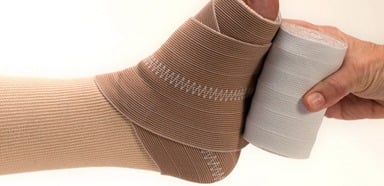
Carolon developed an electronic compression sensor provides applied interface ankle compression. Through the use of printed Force Sensing Resistors, the pressure of the bandage can be read and adjusted instantly
For the first time ever, clinicians have an accurate and cost-effective way to ensure their patients receive the most appropriate compression for their needs. The Carolon Sleeve and Reader can be used with their proprietary compression wrap or with any elastic compression bandage. The disposable, flexible, and low-profile pressure sensor attaches to sleeve to record the pressure at any point on the limb.
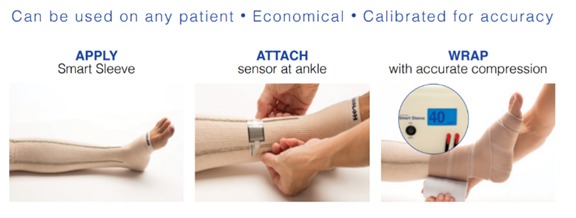
6. E-Bandages
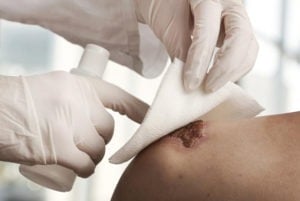 The next article features a study on a printed electronic bandage. The study published in ACS Nano describes astonishing technology involving a self-powered bandage that can reduce healing time through the generation of an electric field over the injury. Interestingly, the use of electrical stimulation in the process of wound healing has long been studied since the early 1960s. However, these observations were restricted as equipment for electric generation was large and required patients to be hospitalized.
The next article features a study on a printed electronic bandage. The study published in ACS Nano describes astonishing technology involving a self-powered bandage that can reduce healing time through the generation of an electric field over the injury. Interestingly, the use of electrical stimulation in the process of wound healing has long been studied since the early 1960s. However, these observations were restricted as equipment for electric generation was large and required patients to be hospitalized.
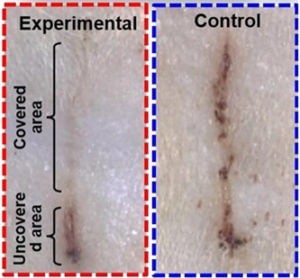
Researchers wanted to develop a simpler electrical method requiring little to no use of the equipment and obviously no patient hospitalization—they came up with the development of a flexible, self-powered bandage capable of converting skin movements into a therapeutic electric field otherwise known as the E-bandage using printed STIM pads in the bandage.
The E-bandage was tested on rats and results showed that wounds healed in 3 days in comparison to just 12 days with a regular bandage involving no electrical field.

Butler Technologies, Inc. specializes in designing, developing, prototyping and manufacturing biometric sensors, printed heaters and force sensors.
Because of the ability of the ink and substrate to flex and stretch, embedded sensors and circuits conform to the body’s curvature and not hinder movement. Since these sensors are printed on thin films, very little weight is added to the fabric through the incorporation of this exciting new technology. Circuits are printed on thin substrates that can be heat transferred to textiles using traditional equipment in the garment decorating industry.
If you have an idea or think your product could benefit from e-textiles technology, contact Butler Technologies today. Our Printed Electronics Team will guide you through material selections and the best methods for design, development, and implementation of your ideas from proof of concept to mass production.